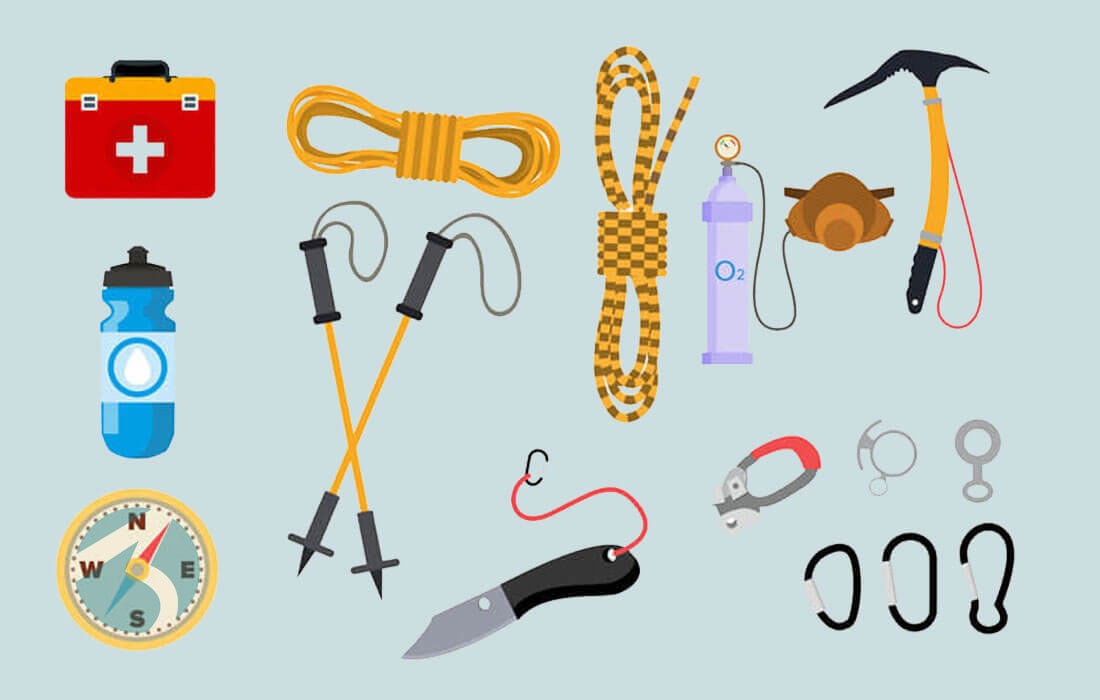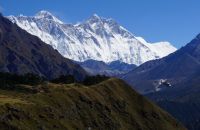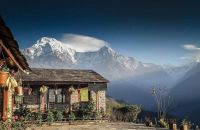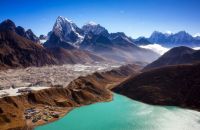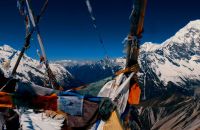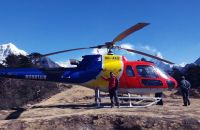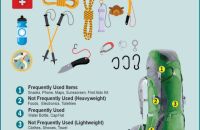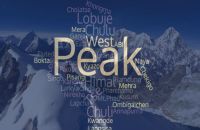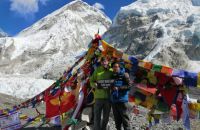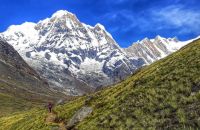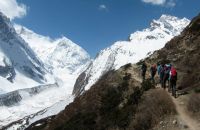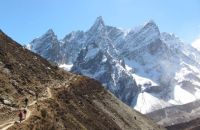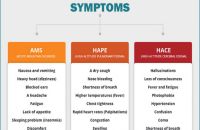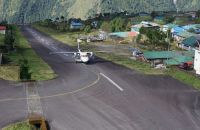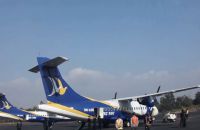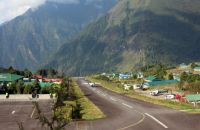Talk with our local travel specialist who can help organize your trip.
Packing List for Trekking in Nepal up to 5500m
What you need to pack will depend on the time of year you choose to trek, the duration of your trek and how high you will reach. The variation in altitude, temperature and your personal needs should be taken into account while packing for your trip. We want you to understand that you won’t be needing all the items listed below.
We recommend you to do a little research on your own and check for the day-to-day temperatures and weather patterns and pack accordingly. Trust us, it will save you a lot of space in your luggage and extra baggage fee by being prudent and using a little bit of common sense.
The weight limit for your luggage while trekking is 33 pounds or 15 kg. Your luggage will be carried by your porter but you are required to carry a day-pack (with your valuables or anything important) on your own. You can leave your spare luggage (items which you don’t need for the trek) at your hotel. Every hotel in Kathmandu offers locked storage which is completely safe and free. But make sure that you lock your luggage properly before giving it up for storage.
Recommended Read : Teahouse Trekking in Nepal - All you need to know
The list given below is just a guideline to help you pack for your adventure. Most of the items can be hired or bought in Kathmandu. There are many shops in Thamel selling branded as well as locally made trekking gear and equipment.
Table of Content
Important Documents And Items
- Valid passport, 2 extra passport size photos, airline tickets
- Separate photocopies of passport, visa form (easily obtained at Tribhuvan International Airport, Kathmandu), proof of insurance
- Dollars, Pounds or Euros in cash for purchasing Nepalese visa at Kathmandu airport, for paying for restaurants and hotels, for gratuities, snacks, and to purchase your own drinks and gifts
- Credit cards, Bank/ATM/Cash machine cards for withdrawing funds from cash machines (bring a photocopy of your cards), traveler's checks, etc.
- Nepalese currency while trekking to buy snacks and other items en route
How To Pack Your Backpack
Packing list for trekking
Head
- Bandana or headscarf, very useful for dusty conditions
- Balaclava that covers your ears – Needed only for a winter trek or for +3000m treks
- Beanie
- Wide-brimmed sunhat
- Neck gaiter or warmer
- Headlamp with extra batteries and bulbs
- Sunglasses with UV protection
- Prescription sunglasses (if required)
Upper Body
- Long sleeve shirts
- T-shirts
- Lightweight thermal tops
- Fleece wind-stopper jacket or pullover
- Waterproof (preferably breathable fabric) shell jacket
- Down Vest – Only for winter or high altitude (+3000m) treks
- Down jacket
- Gore-Tex jacket with hood, waterproof and breathable
Hands
- A pair of lightweight poly-liner gloves or lightweight wool or fleece gloves.
- A pair of mittens, consists of 1 Gore-Tex over mitt matched with a very warm polar-fleece mitt liner (seasonal)
Lower Body
- Non-cotton underwear briefs
- Hiking shorts and hiking trousers
- Lightweight thermal bottoms
- Fleece or woolen trousers/ waterproof shell pants, breathable fabric.
Feet
- Lightweight inner socks, heavy poly or wool socks and cotton socks
- Good quality hiking boots (sturdy soles, water-resistant, ankle support, “broken in”)
- Running shoes and rubber sandals/flip-flops
- Gaiters and crampons – Needed only if your trek involves walking on snow or ice
Sleeping
- Sleeping Bag – The type of sleeping bag you carry will depend on where and when you choose to trek. For treks up to 3000 metres, a lightweight 2 season (ideal for 5°C to 0°C) sleeping bag will be good enough. If you are not too finicky about using the blankets in teahouses, you can skip carrying the bulky sleeping bag altogether. You can carry a liner and layer the blanket over it. If you feel cold, you can wear your warm clothes to bed or request for extra blankets.
For high altitude (+3000m) treks, where nighttime temperatures dip well below the freezing point, a 4 season (suitable for low temperatures up to -10°C) sleeping bag is a must. If you are planning on a high altitude trek during winter, you may even need a 5 season sleeping bag.
- Sleeping bag liner
- Pillow case
Rucksack and Travel Bags
- A small daypack/backpack(30L) for carrying your valuables, should have good shoulder padding
- Large duffel bag
- Small padlocks for duffel-kit bags
- Waterproof covers
Medical
- Small, personal first-aid kit (simple and light)
- Aspirin, first-aid tape, and plasters (Band-Aids)
- Skin-blister repair kit
- Anti-diarrhea pills
- Paracetamol
- Cough and/or cold medicine
- Anti-altitude sickness pills: Diamox or Acetylzolamide
- Stomach antibiotic: Ciprofloxacin, etc. Do not bring sleeping pills as they are a respiratory depressant.
- Throat lozenges
- Water purification tablets or the water filter
- Earplugs
- Lip guard, sunscreen, eye drops
- Extra pair of prescription glasses, contact lens supplies
Practical Items
- Small roll of repair tape, sewing-repair kit
- Cigarette lighter / small box of matches
- Compass or GPS(optional)
- Alarm clock/watch
- Camera with extra SD cards and batteries
- Large Ziploc bags
- 2 water bottles (1 liter each)
- Small folding or Swiss knife
- Binoculars (optional)
- 4 large, waterproof, disposable rubbish sacks
- Socket adapter Type C (with circular pins)
Toiletries
- Medium-sized quick-drying towel
- Toothbrush/paste (preferably biodegradable)
- Multipurpose soap (preferably biodegradable)
- Small sachets of shampoo
- Deodorants
- Nail clippers
- Face and body moisturizer
- Female hygiene products
- Small mirror
Personal Hygiene
- Wet wipes (baby wipes)
- Tissue /toilet roll
- Anti-bacterial hand wash
- Hand sanitizer
Extras/Luxuries
- Reading book
- Trail map/guide book
- Journal and pen
- iPod
- Playing cards (to help you pass the time at teahouses and/or camps)
- A modest swimsuit
- Binoculars (optional)
Sleeping bag and liner, down jacket, trekking poles, gaiters, crampons, backpack, etc. can be rented or bought in Kathmandu.
Seasonal Temperature Chart
A seasonal temperature chart for Nepal might help you pack for your trek. The listed temperatures are in Celsius.
| Altitude | Spring | Summer | Autumn | Winter | ||||
| March, April, May | June, July, Aug | Sept., Oct, Nov | Dec, Jan, Feb | |||||
| Max. | Min. | Max. | Min. | Max. | Min. | Max. | Min. | |
| 1000m | 37 | 10 | 37 | 14 | 35 | 10 | 24 | 6 |
| 1500m | 33 | 9 | 33 | 10 | 34 | 7 | 22 | 4 |
| 2000m | 28 | 5 | 28 | 9 | 28 | 6 | 20 | 2 |
| 2500m | 25 | 2 | 25 | 6 | 25 | 5 | 18 | -1 |
| 3000m | 22 | 1 | 22 | 1 | 20 | 0 | 16 | -2 |
| 3500m | 18 | 0 | 18 | 0 | 18 | -3 | 14 | -4 |
| 4000m | 17 | -2 | 17 | -1 | 12 | -4 | 12 | -7 |
| 4500m | 16 | -4 | 16 | -2 | 11 | -5 | 10 | -6 |
| 5000m | 14 | -8 | 14 | -6 | 10 | -8 | 6 | -12 |
- Written by: Naba Raj Amgai
- Updated: Wednesday Feb 15, 2023

